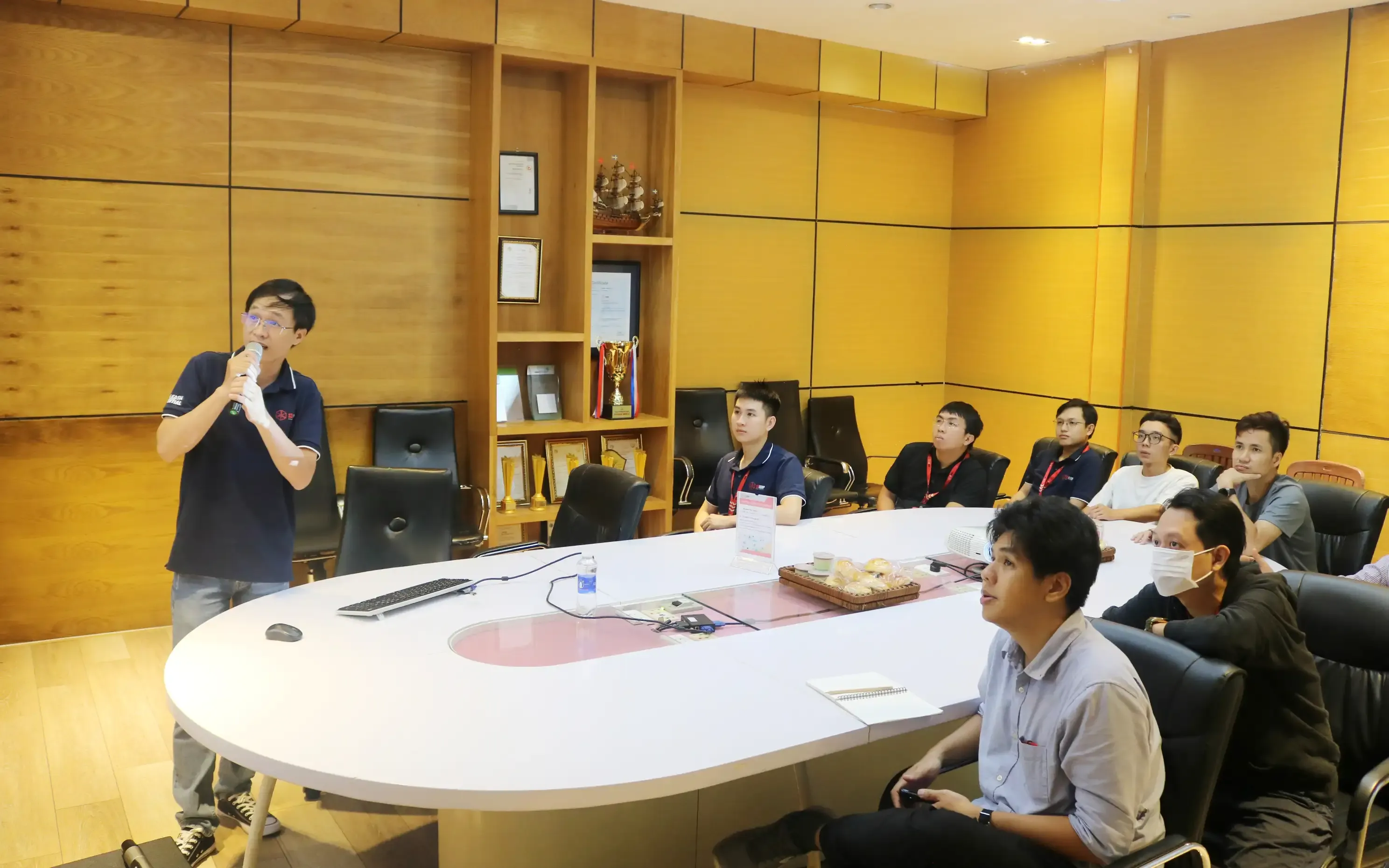WordPress Gutenberg & Laravel 12 Sharing Session

News
On Friday, August 1, 2025, S3Corp. hosted a focused knowledge-sharing session on two key areas in modern web app development: WordPress Gutenberg Block Development and Laravel 12 as a Full-stack Framework. The event offered technical insights into both frontend and backend development, empowering teams with updated tools and workflows.
04 Aug 2025
The WordPress Gutenberg Block Development and Laravel 12 as a Full-stack Framework training session aligned with our learning-driven culture, providing a platform for employees to stay informed, grow technical capabilities, and build a stronger development community. Through collaborative sessions like this, S3Corp. ensures the engineering teams are equipped with practical knowledge and adaptable skills.

Understanding Gutenberg Blocks in WordPress
The session began by explaining what a Gutenberg Block is. A Gutenberg Block is a modular content element used in the WordPress block editor. Instead of using shortcodes or custom HTML, developers can use blocks to manage content through a visual interface. These blocks allow users to build pages by inserting and configuring sections like text, images, videos, buttons, and more.
Attendees were introduced to different types of blocks available in the Gutenberg editor. These include core blocks provided by WordPress such as paragraphs, headings, galleries, and embeds, as well as custom blocks developed to extend functionality. Understanding these types enables developers to create better user experiences by combining and customizing content elements.
The discussion then moved into the setup and tools required for Gutenberg block development. Participants explored the standard development stack including Node.js, npm, and the WordPress @wordpress/scripts package. The setup process also involved using tools like webpack for bundling assets and Babel for JavaScript compatibility.
Anatomy of a Gutenberg Block was a key topic that helped clarify how blocks are structured. A block consists of metadata defined in the block.json file, an edit function for how the block appears in the editor, and a save function for how it renders on the frontend. These parts are developed using JavaScript, JSX, and sometimes PHP depending on the use case.
To help the team grasp the concept better, the session included a walk-through of creating a custom block. The demonstration showed how to register a new block, define attributes, build the user interface using React-based code, and manage content states. The live example illustrated how developers can encapsulate specific logic and styling into reusable blocks that editors can easily drag and drop.
The session concluded the Gutenberg part by covering how to deploy and use custom blocks inside WordPress themes or plugins. Participants learned the practical steps of integrating the blocks into real-world projects, such as enqueueing scripts, registering block categories, and managing version control.
Laravel 12 as a Full-stack Framework
The second half of the session shifted focus to Laravel 12, presented as a powerful full-stack PHP framework. Laravel allows developers to handle everything from database operations to building dynamic interfaces using a unified ecosystem.
The introduction emphasized that Laravel offers more than a backend API framework. It supports full-stack application development using technologies like Blade, Livewire, and Inertia. These tools allow teams to build interactive frontends without the need for complex JavaScript frameworks.
Blade is Laravel’s templating engine, offering clean syntax to render dynamic content. During the session, examples were shown on how Blade supports template inheritance, conditionals, loops, and components. This templating system streamlines the process of building and managing user-facing views.
Livewire was discussed as a tool that bridges the backend and frontend. It enables developers to write server-side logic while building reactive interfaces. Attendees were introduced to how Livewire simplifies form submissions, validation, and real-time updates without requiring custom JavaScript.
Inertia.js was presented as a solution that lets Laravel work seamlessly with JavaScript frameworks like Vue or React. It creates a single-page application experience while still allowing backend routing and controllers. The group reviewed sample code and architecture to understand how Inertia reduces frontend complexity while maintaining flexibility.
The Laravel segment also covered how these tools are built into the framework, allowing developers to manage everything in a single project. Laravel’s built-in features such as routing, authentication, migrations, and Eloquent ORM were briefly discussed to highlight how full-stack development can be streamlined under one structure.
Read More: Outsource Laravel Development: A Comprehensive Guide to Streamline Your Projects
Value of Knowledge Sharing at S3Corp.
This training event reflects S3Corp.'s commitment to continuous learning. The session was not limited to sharing theory but focused on giving teams working knowledge they can apply to current and future projects. By connecting practical development practices with structured learning, S3Corp. enables teams to grow their skills and adapt to new technologies effectively.
Sessions like this are part of the ongoing S3 Training initiative. This internal program supports professional development, strengthens teamwork, and encourages employees to take active roles in learning and sharing. The company fosters an environment where knowledge flows across roles, departments, and projects.
S3Corp. extends appreciation to all who participated and contributed to the WordPress Gutenberg and Laravel 12 session. The exchange of ideas and walkthroughs brought forward useful techniques for full-stack development. Stay engaged with future sessions under the S3 Training program to continue building together.




_1746790910898.webp?w=384&q=75)
_1746790956049.webp?w=384&q=75)
_1746790970871.webp?w=384&q=75)
